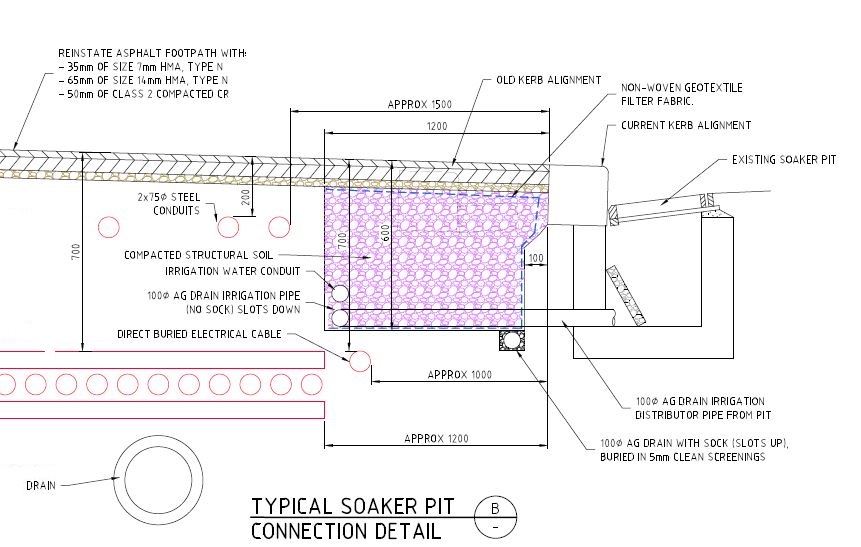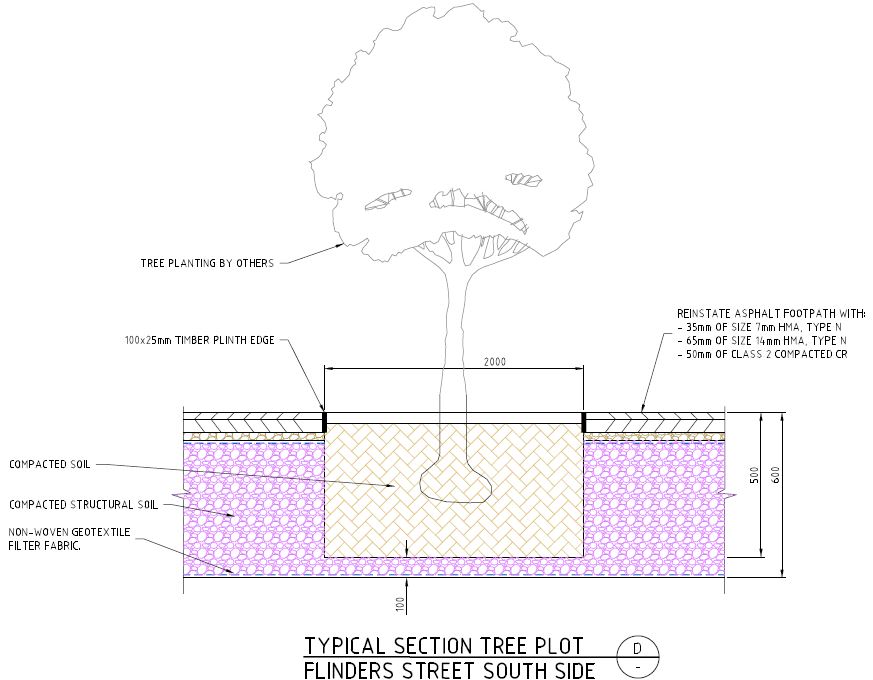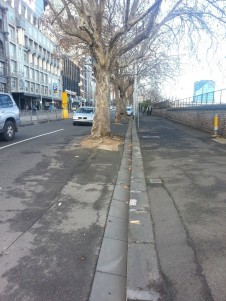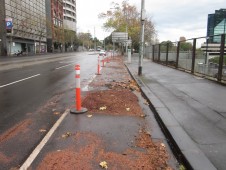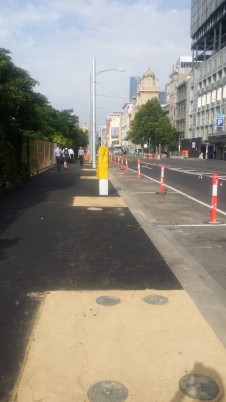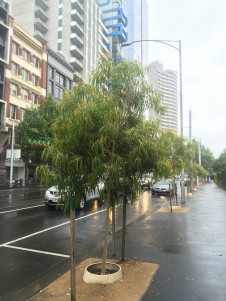Flinders Street Tree Replacement - soak wells and soil volume
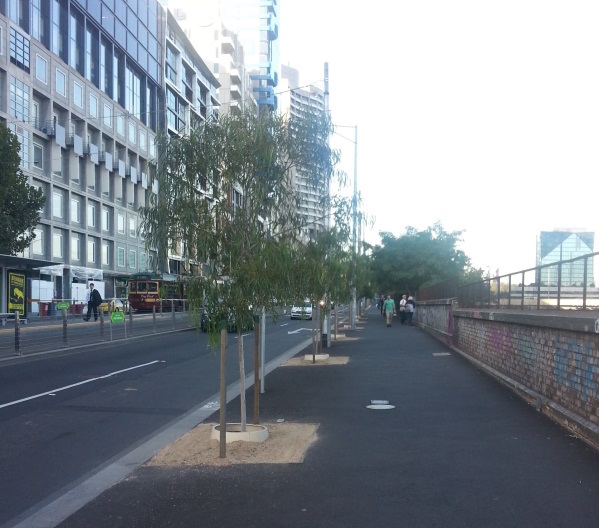
As part of the Urban Forest Strategy, Flinders Street was identified as an opportunity for streetscape redesign and replacement of trees. Between Exhibition and Russell Streets several London Plane trees were in poor health as a result of damage from vehicles and needed to be replaced. To minimise the potential for vehicle damage and allow trees to be planted closer together council took this opportunity to redesign the street. The footpath was widened so that new trees could be planted behind a renewed kerb and channel. The new streetscape includes structural soil and soaker pits that capture and drain water into an infiltration trench.
- Flinders Street Tree Replacement - soak wells and soil volume






